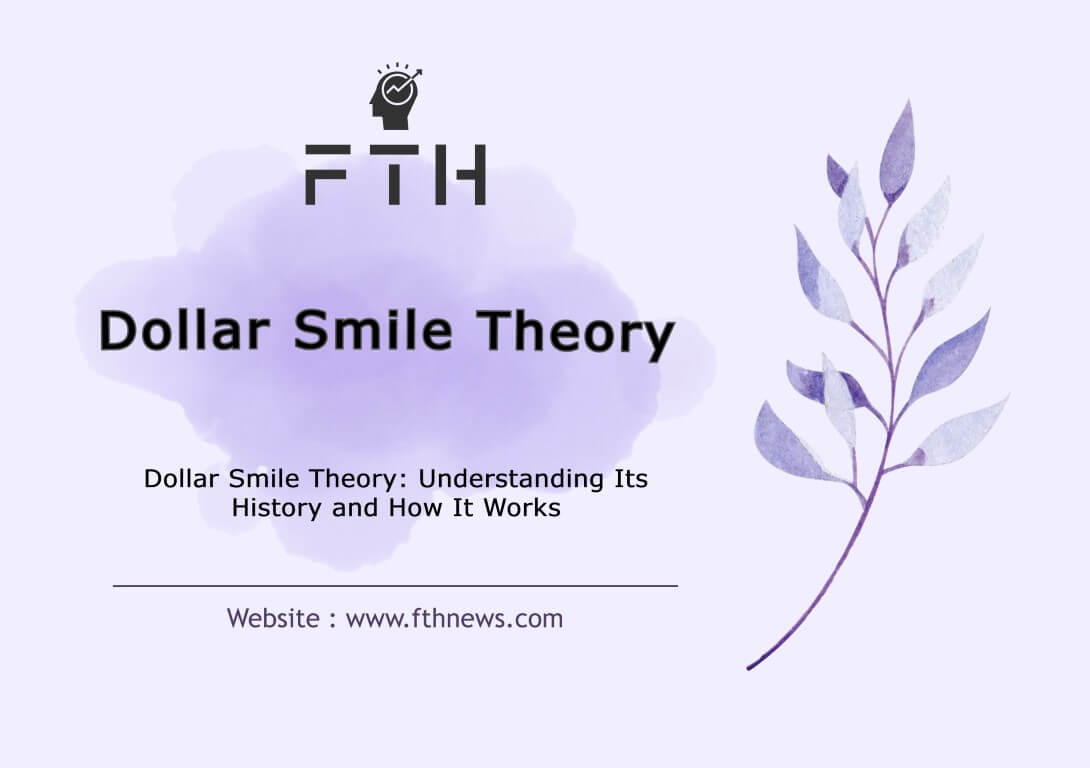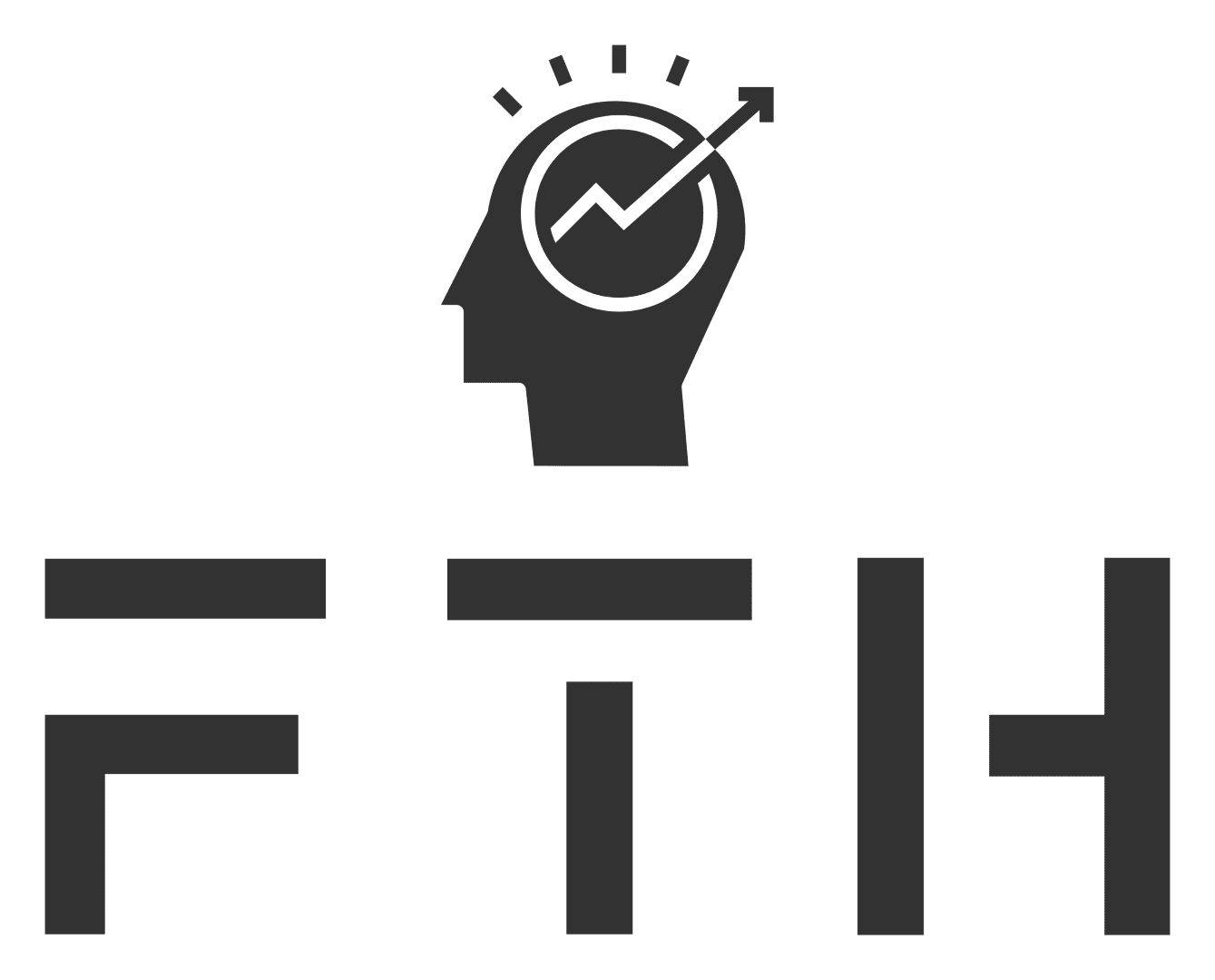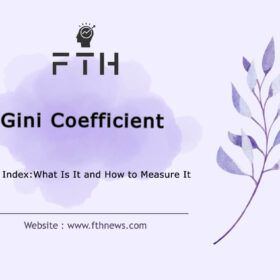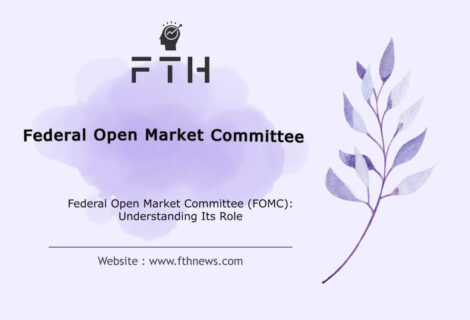
Dollar Smile Theory: Understanding Its History and How It Works
The Dollar Smile Theory, coined by economic experts, provides insights into the economic and financial dynamics related to the US dollar, both domestically and internationally.
This theory is a framework that considers various variables influencing the dollar’s value within and beyond the United States, shaping its behavior in the form of a “smile.” It is particularly relevant during times of economic crises.
The Dollar Smile Theory: Explained
In essence, the Dollar Smile Theory suggests that the US dollar functions as a conservative and risk-resistant currency during periods of economic downturn and financial stress within the country. The theory can be broken down into three key scenarios:
Strong US Economy: When the US economy is robust and flourishing, investors tend to allocate their funds into assets such as the US dollar and US government bonds, causing the dollar’s value to appreciate.
Economic Uncertainty: During times of economic uncertainty and global financial turmoil, investors seek refuge in the US dollar and other safe-haven assets. This increased demand drives the value of the US dollar higher once again.
Stock Market Performance: If the US stock market attempts to outperform other markets during periods of economic stress, it may lead investors to favor riskier, higher-yielding assets, potentially causing the US dollar to depreciate.
These three scenarios collectively constitute the Dollar Smile Theory in the forex market, illustrating the varying behaviors of the US dollar under different economic conditions. The theory distinguishes between two types of US dollars:
Domestic Dollar: The value of investing in this dollar is closely linked to internal economic changes and returns within the United States.
International Dollar: This form of the dollar is utilized for global transactions and plays a pivotal role in international trade and the purchase of US government bonds. Many investors and traders turn to it due to its low-risk status in world markets.
Understanding the Dollar Smile Theory can provide valuable insights for traders and investors looking to navigate the complex world of forex and international finance. It offers a framework for anticipating how the US dollar is likely to respond to changing economic circumstances, making it an essential concept in the field of international finance.
History of the Dollar Smile Theory
The Dollar Smile Theory, a cornerstone of financial economics, was first conceptualized in the late 1990s by Steven Jenn, a seasoned economist who had previously worked with prestigious institutions such as the International Monetary Fund and Morgan Stanley.
This theory is centered around two distinct types of US dollars and is built upon three pivotal scenarios that capture its essence.
In the present economic landscape, a robust American economy, the allure of US dollar-based investments, and the attractive yields offered by American government bonds have collectively propelled the US dollar’s value, making it a favored option for investors.
Steven Jenn, drawing from his extensive experience at the International Monetary Fund and the Bank of England, introduced the “Dollar Smile” theory in the early 1990s.
This groundbreaking theory aimed to elucidate the intricate relationship between the US dollar’s value and the global economic environment. Over time, it has gained recognition as a fundamental concept in the realm of economics and finance.
Today, financial analysts and economists widely employ the Dollar Smile Theory to forecast fluctuations in the US dollar’s value and to discern its impacts on financial markets and the global economy. The theory’s capacity to anticipate the dollar’s behavior under different economic conditions makes it an indispensable tool for those navigating the complex world of international finance.
This theory’s enduring relevance underscores its pivotal role in understanding the dynamics of the US dollar and its impact on global financial systems.
Dollar Smile Theory Scenarios
In the preceding sections, we explored the Dollar Smile Theory, a relatively new concept in the global economy. This theory is constructed around three distinct scenarios, each elucidating the factors driving the rise and fall of the US dollar’s value and the significance of investing in this currency.
The Dollar Smile Theory can be summarized by three key scenarios:
The Dollar Strengthens Due to Risk Aversion:
During times of economic uncertainty and crises, investors seeking low-risk options inevitably turn to the US dollar. In the eyes of many market participants, the dollar represents a reliable haven for investment, offering a prospect of steady profits.
This widespread belief has contributed to the consistent growth of the US dollar’s value, even when the domestic American economy faces challenges. The first part of the Dollar Smile Theory demonstrates that in uncertain global economic conditions, investors flock to the US dollar and other safe currencies, such as the Japanese yen, significantly bolstering the value of the US dollar.
The US Dollar Depreciates Due to Economic Weakness:
A weakened economic environment within the United States and a thriving domestic stock market can directly impact the global value of the US dollar, causing it to depreciate. When the American stock market flourishes, the demand for the US dollar diminishes, resulting in a decrease in its price. This situation aligns with the second part of the Dollar Smile Theory, which predicts a decline in the currency’s value.
At the lower end of the “smile,” a struggling US economy, decreasing government debt, and potential interest rate cuts can collectively lead to a sharp depreciation of the US dollar. In conditions where demand for the dollar dwindles, the incentive to purchase and hold the currency diminishes, causing a significant drop in its value. In the world of finance, everything remains relative and can change rapidly.
The Dollar Strengthens Due to Economic Growth:
The third facet of the Dollar Smile Theory comes into play when the US economy experiences growth, and its domestic stock market weakens.
In these circumstances, the US dollar’s value increases. The theory underlines that during periods of economic growth and improvement in US economic indicators, the dollar exhibits optimism and strengthens. As both the global and US economies emerge from recessions, heightened expectations for interest rate hikes and economic expansion stimulate the dollar market. In essence, a “dollar smile” emerges when the United States enjoys robust economic growth.
These three scenarios encapsulate the essence of the Dollar Smile Theory and provide a framework for understanding the dynamic behavior of the US dollar in response to various economic conditions. Whether it’s a safe haven during times of risk aversion, a casualty of economic weakness, or a beneficiary of economic growth, the Dollar Smile Theory offers valuable insights into the complex world of international finance and currency markets.
How the Dollar Smile Theory Works
The Dollar Smile Theory serves as a valuable tool for explaining and predicting fluctuations in the value of the US dollar under varying economic conditions. This theory is widely employed to analyze events in financial markets and the global economy, and it also wields significant influence over governmental tax policies.
The effectiveness of tax policies can be strongly intertwined with the value of the US dollar and its repercussions on the global economy.
The Dollar Smile Theory posits that the value of the US dollar experiences strengthening during different economic cycles, with the rise of digital infrastructure and stable currencies playing a substantial role in this resurgence of the dollar. This phenomenon is particularly pronounced in countries like Iran, where access to global banking services is limited, making the US dollar a preferred safe haven.
Is the Dollar Smile Theory True?
The Dollar Smile Theory provides a simplified and explanatory model to understand the impact of economic factors on the US dollar’s value. While certain aspects of the theory have manifested at various times, it cannot be applied universally. Economic and financial factors are inherently complex and multifaceted, and the Dollar Smile Theory is just one of the many elements influencing the currency’s value.
Typically, when the US economy is thriving, with positive expectations for interest rate hikes and economic growth, the US dollar tends to strengthen. Conversely, in times of market uncertainty and panic, investors turn to the dollar as a safe haven, causing its value to appreciate.
Dollar Smile Terms
The concept of the Dollar Smile comprises three key segments, illustrating the changes and movements of the US dollar over time based on global economic conditions and the state of the US economy:
The Smile Segment: This segment represents periods when the US dollar’s value rises, typically occurring during robust economic growth in the United States. Investors flock to US assets during these times, considering the dollar a “safe haven” currency, leading to an increase in its value.
The Bottom Part: This section refers to external developments that weaken the dollar. These changes may result from economic shocks within or outside the United States, fueling investor fears.
The Other Part of the Smile: This segment represents a rise in the value of the dollar during periods of US economic decline. Despite domestic economic challenges, investors still gravitate towards this low-risk currency due to global conditions. It signifies economic development and improvement, instilling confidence in investors.
Final Word
The “Dollar Smile” theory stands as a pivotal concept in economics and taxation, elucidating the intricate relationship between the US dollar’s value and global economic and financial conditions. It aids in describing and predicting changes in the dollar’s value and market behavior, highlighting the diverse variables and contradictions involved in the American economy’s impact on the dollar.
The Dollar Smile Theory is a valuable resource for investors and traders to anticipate the direction of the dollar and currency pairs. It is fundamentally concerned with the cyclical and dynamic effects of economies and the trajectory of the US dollar within the complex world of international finance.














